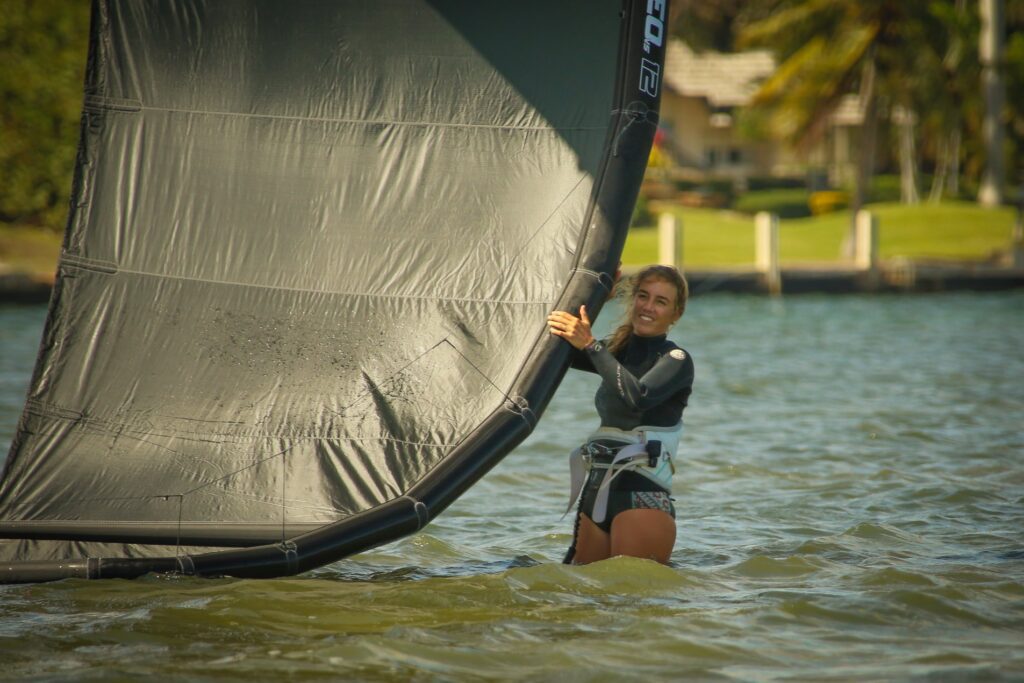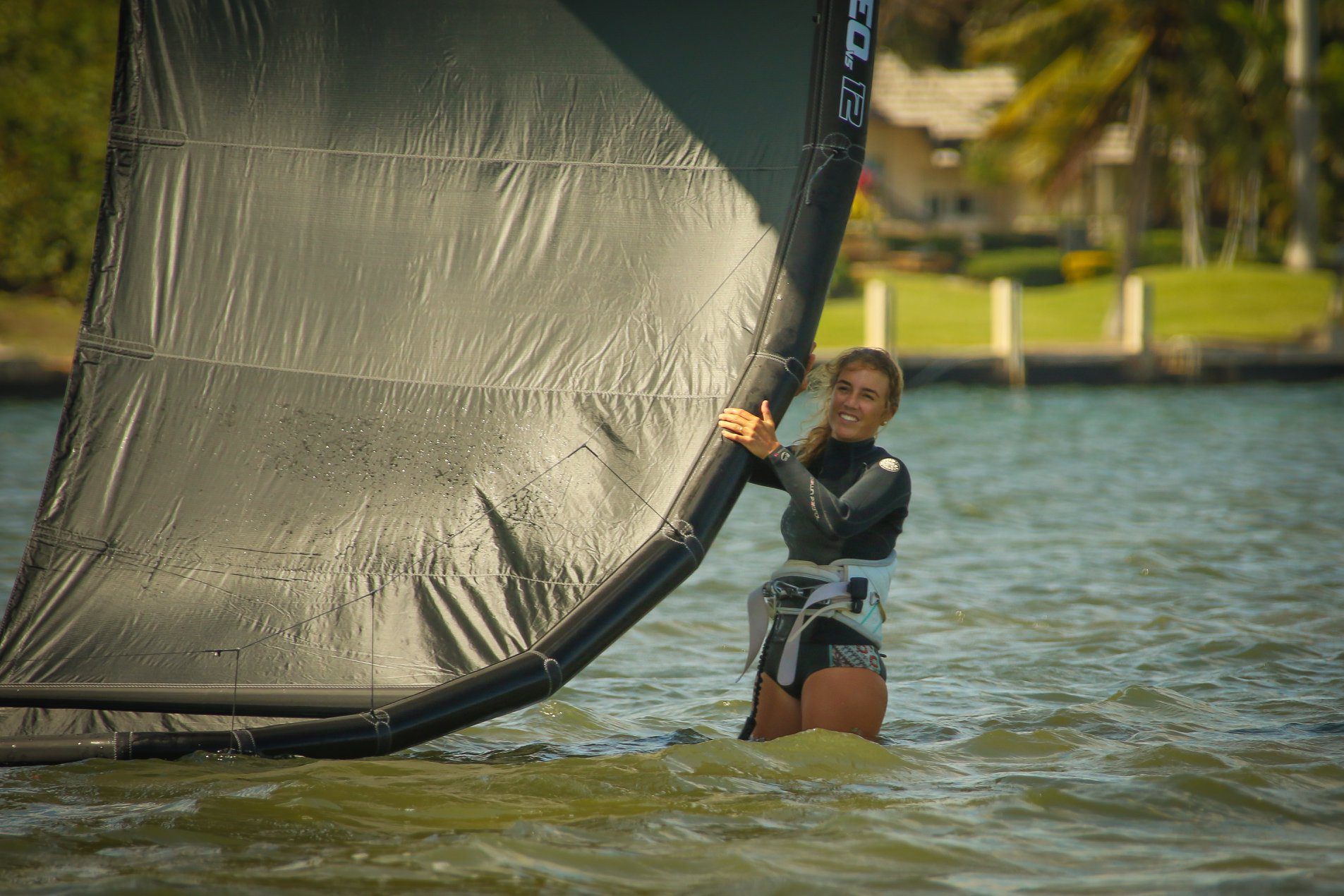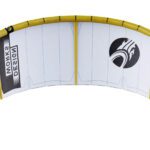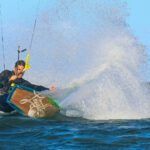
Introduction to Self-landing your kitesurfing.
Self-landing your kitesurfing kite is a crucial skill every kiteboarder should know how to do. Being able to self-land safely can help you respond quickly and effectively in any unexpected situations or changes in wind conditions. With modern kitesurfing kites, self-landing has become more accessible thanks to the incorporation of depower and safety release features. This article will cover different methods for safely self-landing your kite.
Self-Landing a C-Kite.
The first method we will discuss is self-landing a C-kite. Start by steering your kite towards the ground while it is at roughly 45 degrees in the sky. Grab and pull on both front lines simultaneously to depower the kite. As the kite begins to fall, grab the top front line and pull it towards you. This will bring the uppermost tip down into the ground. Practice this method in lighter winds before building up to stronger winds.
Flagging Out the Kite.
Another method for self-landing your kite is to use your safety line to flag out the kite and then walk up it. Flagging a kitesurfing kite eliminates tension on all the lines but one, which causes the kite to lose much of its power. From there, unhook and walk carefully up the flagging line, not pulling but keeping a firm grasp on it, climbing up to the kite. Once at the kite, grab hold of the leading edge to place it down. On a five-line kite, the fifth line functions as the flagging line.
Self-Landing a Cabrinha Kite.
If you are using a Cabrinha kite, the IDS safety system makes self-landing much easier. The IDS functions as a quasi-fifth line. In light to medium winds, you can engage the IDS by releasing the QuickLink system with the kite several feet above the ground, causing the kite to land naturally out of the wind. If the kite fails to properly land and relaunches, unhook and walk up the safety line until you reach the kite. Another method is to land the Cabrinha kite on its wingtip, grab the center lines, unhook, and walk up the kite. Once you reach the point where the lines split, hold the top line and pull it aggressively towards you, resulting in the kite falling on its leading edge out of the wind.
Last Resort – Aggressive Crash.
If none of the above methods work, bring your kiteboarding kite about 30 degrees off the ground and aggressively crash it to cause the leading edge to lay flat. However, this creates unnecessary wear on your kite and leaves the kite with a tendency to spring off the ground and relaunch or roll across the wind window. If this happens, let go of the bar to eliminate the power and prevent yourself from accidentally launching the kite directly downwind.
Safety Precautions.
Regardless of your self-landing technique, never wrap the lines around any part of your body, especially your fingers. You could seriously injure yourself or lose a finger if the kite powers back up. Also, when unhooking, ensure your leash is adequately secured, and don’t be afraid to let go of the bar. Practice self-landing techniques in light to medium wind conditions where the risk is low if things go wrong.
Tips for Self-Landing a Leading-Edge Inflatable Kitesurfing Kite.
- Know your kite: Before attempting to self-land your kite, it’s crucial to thoroughly understand how it operates, including its depower and safety release features. Read the manufacturer’s instructions carefully and practice in a controlled environment before heading to the water.
- Please choose the right conditions: Self-landing is easier in lighter winds, so it’s recommended to start practicing in winds that are not too strong. You can gradually build up to stronger winds as you become more proficient.
- Use the proper technique: As outlined above, several methods for self-landing a kiteboarding kite are suited to different types of kites. It’s essential to choose the way that is best for your particular kite and conditions.
- Be aware of your surroundings: When self-landing, it’s crucial to be mindful of your surroundings, including other kitesurfers, obstacles, and changing weather conditions. Always ensure you have a clear path to land your kite without endangering yourself or others.
- Practice makes perfect: As with any skill, practice is the key to mastering self-landing. Take the time to practice in a controlled environment and gradually build up to more challenging conditions.
Conclusion.
Self-landing a leading-edge inflatable kitesurfing kite is an essential skill for any kiteboarder looking to maximize their time on the water. With modern kitesurfing kites, self-landing has become much more accessible by incorporating depower and safety release features. You can safely learn how to self-land your kite, even in the most unruly high wind conditions, by practicing first in light and then medium winds. Remember, practice is the key to mastering self-landing, so take the time to hone your skills and be aware of your surroundings.
Author
Latest entries
 WatersportsSeptember 16, 2024Cabrinha Moto X: Enjoy the Ride
WatersportsSeptember 16, 2024Cabrinha Moto X: Enjoy the Ride WatersportsMay 19, 2024Cabrinha 2024 Moto XL Review: The Ultimate Lightwind Kite
WatersportsMay 19, 2024Cabrinha 2024 Moto XL Review: The Ultimate Lightwind Kite WatersportsDecember 16, 2023Kiteboarding Travel
WatersportsDecember 16, 2023Kiteboarding Travel WatersportsDecember 14, 2023RED BULL KING OF THE AIR 2023
WatersportsDecember 14, 2023RED BULL KING OF THE AIR 2023




